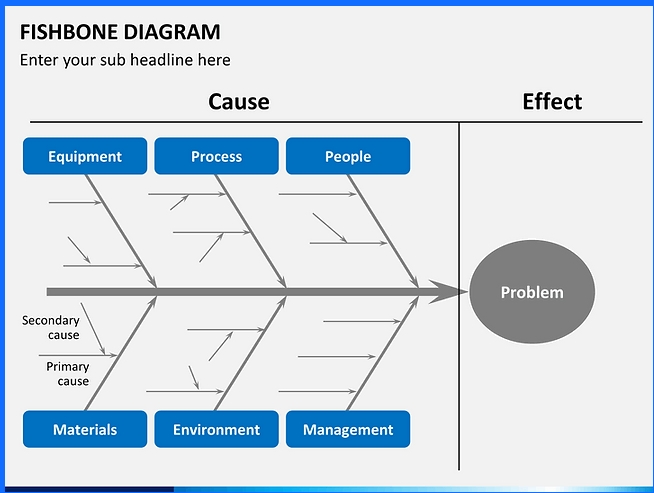
You may have been disappointed by the pace with which your managers make decisions. As a project manager, you feel that you miss the larger proportion of your schedules because some people in leadership delayed some action since they did not turn-around their response in good time: There are several reasons why managers delay in decision-making;
• They may fear committing and taking responsibility
• Organizational cultures of red-tape and bureaucracy
• Sensitivity or complexity of the issue
• Detraction – The decision-makers may be against the process
• High value in cost and effort of committing to the decision
• Any other?
They may not be a comprehensive solution that responds to all the above reasons. However, there are two options that may be explored to resolve most of them, to ensure timely completion of tasks with minimal risks. The two options are; Following a scientific problem solving approach, and using analytics.
A. The scientific approach to problem solving
According to the PMI’s Project Management Body of Knowledge (PMBoK® 6), there are six steps that leaders may follow to make sound, data driven, stakeholder-inclusive decisions. When stakeholders are involved appropriately and in a timely fashion, buy-in and shared responsibility ensue, which are qualities that eliminate the fear of failure by leadership. The six steps are;
- Defining the problem,
- Identifying the root-cause,
- Generating possible solutions,
- Choosing the best solution,
- Implementing the solution, and
- Verifying solution effectiveness.
- Defining the problem
The inaction from management may be as a result of having limited knowledge and understanding of the decision and the issues surrounding it. Defining the problem is a descriptive approach that outlines the properties or characteristics of the issue at hand. Such characteristics may include; quantitative aspects expressing severity, descriptive aspects explaining the nature of the issue and illustrating why it is a problem, and any known possible causes. It is recommended that the description of the issue is backed by reliable data.
2. Identifying the root-cause
Although defining the problem may reveal some of its causes, there is a possibility of a more direct cause to which the team can attribute the problem. Managers can apply tools such as an Fishbone/ Ishikawa Diagram to conduct a root-cause analysis. The analytical technique is conducted by listing the issue as the target node, and outlining all factors that could have led to the issue in the branch nodes. The factors are further analyzed and decomposed with respect to the way they were experienced in the project to reveal anything that may have been missed or factored in wrongly. By reviewing all the factors comprehensively, the team may identify an error or an abnormal occurrence which could have caused the problem. Once the root-cause is identified, the problem solving team may proceed to identify possible solutions.
3. Generating possible solutions
Another reason why we face inaction from our managers is that they may understand the problem and the root cause, but are not confident in providing a solution: This is the part that requires a highly consultative approach. Based on the nature of the root-cause of the problem, the manager and other project stakeholders could identify any specialized expertise to be engaged in finding solutions. If the cause is of limited complexity, they may brainstorm to generate ideas, analyze each idea objectively among themselves, and take collective responsibility for the analytical process.
4. Choosing the best solution
Following the generation of solutions and an objective analysis of each proposal, the team should make a choice of what solution to implement. There are several techniques that may be used; voting is one of them. They may also apply a decision matrix where a set of criteria is defined, which each alternative is subjected to. The solution that best meets the criteria in the decision matrix may be selected unanimously. Examples of criteria to use are; cost of implementation (least cost method), expected payback period and numerous others. To ensure quick equivocal commitment, the ownership of the solution should be collective; by all stakeholders involved: Individual managers will not quickly commit if all the ownership lies with them alone.
5. Implementing the solution
In most cases, the project manager wins when a solution is owned by decision-makers. Therefore, implementation responsibility lies with the project manager because the stakeholders will have authorized the solution. It is critical that you, the project manager, communicates the status and progress of implementation regularly to the stakeholders: This allows them to provide insights and guidance that could enhance your success.
6. Verifying solution effectiveness
One of the victories of a project manager is the ability to demonstrate that the solution works. Success helps the project manager to motivate stakeholders who were involved in the decision-making process, which in turn ensures that they will be willing to participate when called upon in future. Success also increases the team’s level of confidence in you. Therefore, develop techniques of verifying and communicating that the solution is effective. As earlier mentioned, use data to enhance credibility.
B. Using Analytics
In our next blog, InfoLaunch will provide more details on analytics. In summary, when data exists to demonstrate the impact of the problem that warrants a decision, stakeholders are more inclined towards solving it before it gets out of hand. Sometimes the inaction on decisions is caused by lack of in-depth understanding of the problem and its impact.
